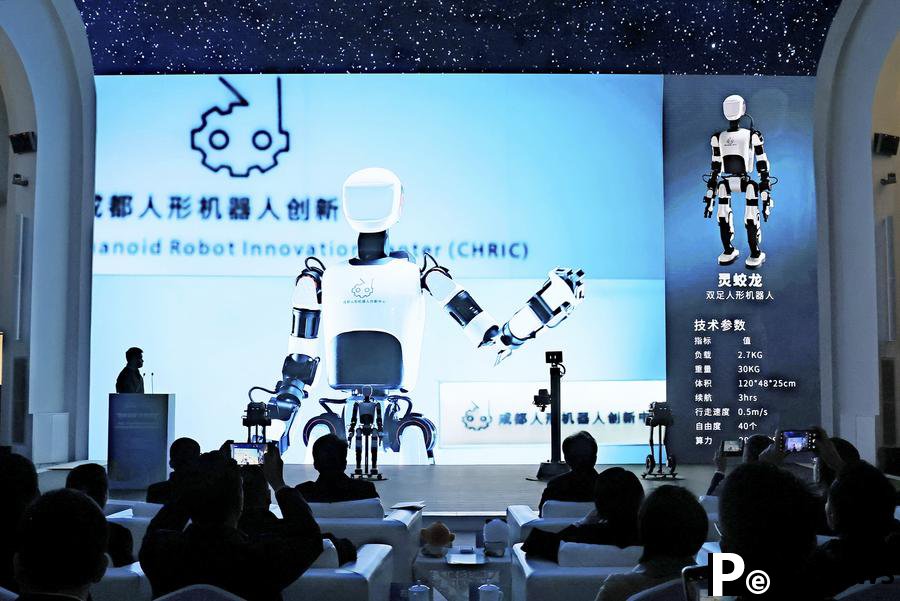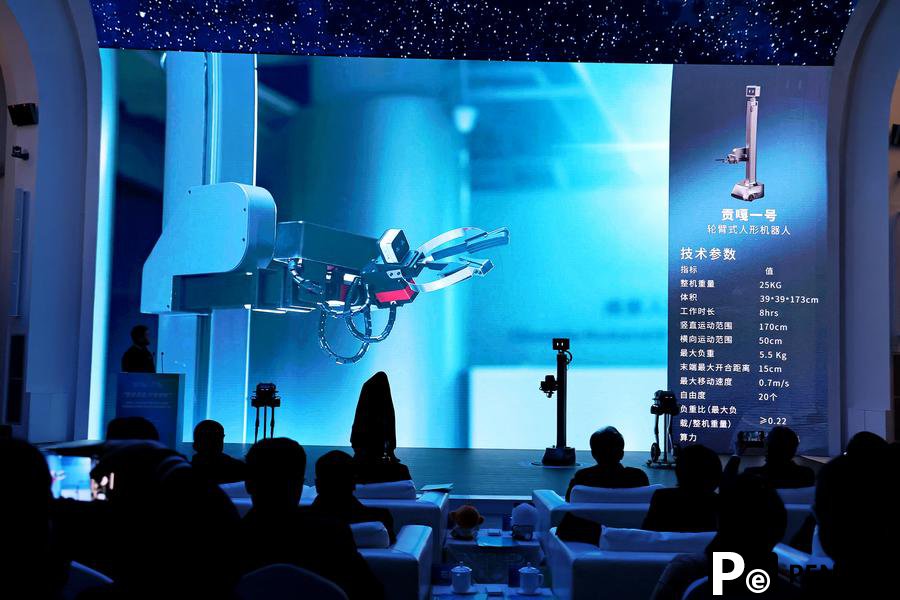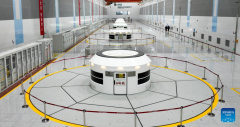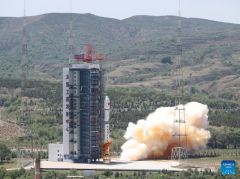Home>>
Making smart robots in the giant panda's hometownBy Yi Ling and Li Like (Xinhua) 16:07, January 02, 2025

A bipedal humanoid robot is presented at a press conference in Chengdu, southwest China's Sichuan Province on Dec. 27, 2024. (Chengdu municipal bureau of economy and information technology/Handout via Xinhua)
CHENGDU, Jan. 2 (Xinhua) -- Zhang Ruirui felt a step closer to his dream of making the world's smartest robots, when seven humanoid robots developed by his team were unveiled on Dec. 27 last year in southwest China's Sichuan Province, an area best known as the hometown of the giant panda.
The robots will be used at the World Games 2025, which will be hosted by Chengdu, capital city of Sichuan, and are expected to feature in various scenarios, such as the torch relay, sports exhibitions, and reception and retail services.
"It's a significant recognition of our work, but that's only the beginning," said Zhang, president of Chengdu Humanoid Robot Innovation Center Co., Ltd. (CHRIC).
Zhang added that CHRIC has focused on the "brain" technology of humanoid robots -- aiming to create the "most powerful brain" for these machines.
"The brain is particularly important as it enables the robots to think, understand and have reasoning capabilities that traditional industrial or service robots lack, with the latter operating via pre-programmed instructions," said Zhang.
Since the beginning of 2024, CHRIC has managed over 30 world-leading technological achievements related to humanoid robot "brains," including its development of China's first humanoid robot high-speed inference model based on diffusion architecture and the country's first multimodal task execution system for humanoid robots.
Recent milestones achieved by Zhang's team in humanoid robot development reflect the current explosive growth of China's humanoid robotics industry.

Self-developed humanoid robots officially debut in Chengdu, southwest China's Sichuan Province on Dec. 27, 2024. (Chengdu municipal bureau of economy and information technology/Handout via Xinhua)
According to a report on the industry released in July at the 2024 World AI Conference in Shanghai, China's humanoid robot market scale was about 2.76 billion yuan (384 million U.S. dollars) last year. By 2029, it is expected to expand to 75 billion yuan, which would account for 32.7 percent of the global market.
"With predictions from figures like Elon Musk suggesting humanoid robots could outnumber humans two-fold, the market potential is immense, even surpassing that of the new energy vehicle industry," said Zhang.
As a next-generation mobile intelligent terminal, humanoid robots represent a culmination of smart information technology while possessing diverse application scenarios -- embodying the characteristics of new quality productive forces that China has been advocating.
In November 2023, the Ministry of Industry and Information Technology released guidelines for the innovative development of humanoid robots, aiming to establish an initial innovation system for this industry by 2025, with breakthroughs in key technologies such as "brain, cerebellum and limbs," and ensuring the safe and effective supply of core components.
Various regions in China, including Beijing, Shanghai, Zhejiang, Guangdong and Shandong have established innovation centers for humanoid robots, integrating production, academia and research to consolidate industry resources and seize early advantages.
Sichuan, an economic driving force for China's vast inland western regions, is also actively responding to the national strategy, having designated artificial intelligence as the "No. 1 innovation project" for 2024, while providing substantial support for such initiatives.
A three-year action plan for the high-quality development of the AI industry in Chengdu (2024-2026) outlines that by 2026, Chengdu aims to have launched 100 new robot models, attracted 100 firms across the industrial supply chain, created 100 benchmark demonstration scenarios, and achieved a total industrial scale of over 60 billion yuan -- thereby establishing itself as a national growth center and demonstration hub for humanoid robot R&D and manufacturing.
According to Zhang, humanoid robots represent a complex system involving multiple fields such as algorithms, chips, new materials and mechanical engineering.
The manufacturing of a complete machine serves as a bridge between technology development and market application, with approximately 70 percent of costs attributed to hardware. Key components such as dexterous hands and joint actuators have high value and present significant research difficulty.
Zhang emphasized that innovation centers across the country will differentiate themselves to avoid homogeneous competition in the sector, focusing instead on industrial synergy to expand the overall market.











